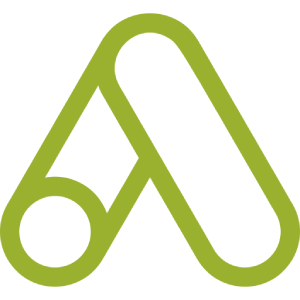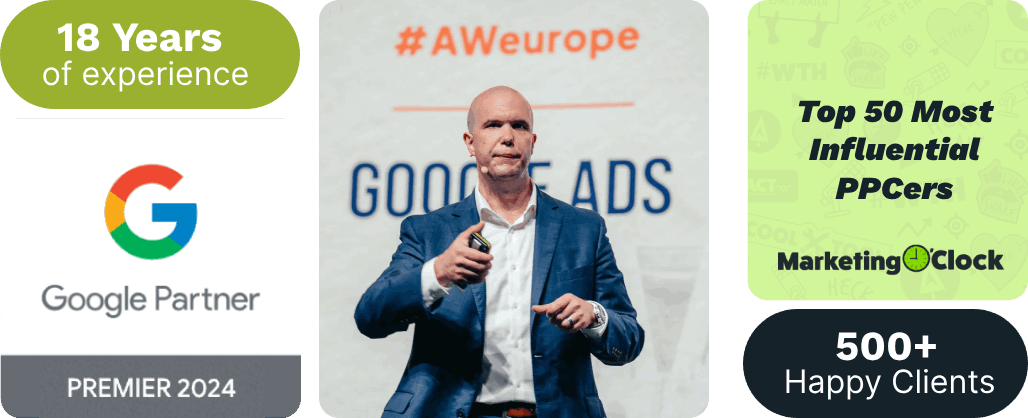If you are looking for a smart way to call attention to your product or service, increase conversions, and lower your cost per acquisition (CPA), a dedicated landing page may be exactly what your business needs.
In a recent YouTube video, Solutions 8 Client Manager Tim Hordo and Strategist Onkar Indalkar met for an in-depth discussion about landing pages and their benefits. This blog will lay out the basics for you.
Table of Contents
- What is a dedicated landing page?
- Who should use a dedicated landing page?
- Why do you need a dedicated landing page?
- Key elements to include in your dedicated landing page
- Are landing pages effective for eCommerce businesses?
- Landing page performance: Important metrics to track
- Bottom line: Measure, don’t guess.
What is a dedicated landing page?
A dedicated landing page is a standalone web page that is specifically designated as the destination for an ad. So, a web browser clicks on the ad for your product or service and they are immediately directed to your landing page rather than, say, your home page URL.
Unlike your home page or the other pages on your website, your landing page is designed to steer users toward a specific conversion action—such as filling out a lead form, signing up for a free demo, or making a purchase.
With that goal in mind, the content will be short and highly engaging, with specific design elements that we will discuss below.
Let’s get started!

Who should use a dedicated landing page?
Landing pages work best for lead generation clients and software-as-a-service (SaaS) companies.
Why?
Because these businesses typically have a single product or service—or a small handful of core products and services—as opposed to thousands of different products. And where it’s practical to create a dedicated landing page for just one or a few products, it doesn’t make sense to do it for a large number of products.
Why do you need a dedicated landing page?
For the majority of lead generation and SaaS businesses, dedicated landing pages allow you to do a lot of things you just can’t do with a normal website.
With website copy, you need to be constantly thinking about search engine optimization (SEO) and how your copy and creative impact your search ranking. In contrast, a dedicated landing page is the perfect place for highly targeted messaging whose sole purpose is to drive conversions.
Put simply, your website is where you want to introduce visitors to your brand, educate them about your business, deliver relevant and informative content through your blogs, provide detailed product descriptions, and answer any questions they may have. A dedicated landing page, on the other hand, is designed to convert rather than educate.
“The whole point of a dedicated landing page is to remove those obstacles and barriers to get someone to take the action, which is to convert and submit that form or make that call.” ~Tim Hordo, Solutions 8 Client Manager
For example, someone looking for an emergency roofing contractor is not going to scroll through every page of your website or read a lengthy blog about roof maintenance. Nope, they want just the most important highlights (i.e., your unique selling propositions, or USPs), plus a fast way to get in touch with you—and that is where dedicated landing pages shine.
The landing page is meant to be more concise and should contain strategic elements (more on that in the following section) that encourage visitors to take action immediately. It should also eliminate certain elements, such as internal links that might distract users from the main conversion goal, or a lot of superfluous information that could make someone lose interest and leave the page.
With a dedicated landing page, you have far more freedom with your copy, images, and video. It also allows for A/B testing and optimization, whereas if you continually change the copy on your website, it may negatively impact your ranking and visitor flow.
In both cases, the primary goal is to make sure your page is user oriented, whether from a search marketing perspective or a paid marketing perspective; it’s all about providing value for the user.

Key elements to include in your dedicated landing page
Now that we have the basics covered, let’s talk about creating our actual dedicated landing page. In the video, Onkar explains that while there are many different layouts you can use, there are some common elements that every landing page should include. We’ve listed them below to help you remember.
Benefit-focused headline
A clear, compelling headline is important. This is the first thing visitors will see when they land on your page, and in just a few words your headline should:
- Inform the reader about your product or service
- Let them know how it will benefit them
Unlike, say, a typical web service page that simply lists the name of the service at the top and launches into a lengthy description about that service, a landing page headline is different. Users aren’t here to learn; they’re here to perform an action.
If done correctly, your headline will capture their attention quickly and keep them reading so they get to your call to action (CTA).
“We have to give more information with less content. That should be the mindset when you are creating a landing page for ads.” ~Onkar Indalkar, Solutions 8 Strategist
Background image
A strong background image can go a long way toward letting people know what you do or what service you provide, says Onkar.
High-quality images and video entice viewers and add to the overall audience experience of your landing page. LIfestyle images are particularly effective for adding authenticity and better connecting with consumers.
Description
When describing your product or service, be concise but compelling.
Keep the description to just a few lines or a bulleted list that focus on your unique USPs. The reader should be able to understand quickly what your product is, what problem it will help them solve, and what pain points it will help to eliminate. Not sure where to begin? Start with these 7 Essentials for Writing Irresistible Landing Page Copy.
Phone number
For a service-based industry, or especially for services that are needed immediately such as emergency plumbing or roofing, Onkar says to make sure your landing page includes a phone number.
The phone number should be placed strategically above the fold, so that people don’t have to waste time scrolling all the way down to the footer to find it. If that’s the case, or if it doesn’t appear at all, users may get frustrated and leave your page without converting.
Lead form
Keep your lead form short and visible so the user doesn’t have to scroll through a ton of content to get to it. According to Onkar, people typically scroll about 50% of the way through your landing page, so if your lead form is hidden all the way at the bottom of the page… well, you can do the math.

A clear, easy-to-spot call to action is a fundamental component for every high-performing landing page. Whether you use a standalone CTA or include your CTA in your lead form, this is the action you want your audience to take and essentially the whole point of the page.
Make sure it is not only persuasive, but that it visually stands out from the rest of the page (for example, in a bright, contrasting color). Also, keep your CTA consistent throughout your landing page to avoid confusion.
Keep our best practices handy.
By incorporating each of these elements into your landing page design, you will be using the same layout that Solutions 8 uses for our clients. Below is a link to the Best Practices When Creating a Landing Page spreadsheet created by Tim and Onkar.

Are landing pages effective for eCommerce?
In a nutshell, no.
As mentioned previously, dedicated landing pages work best for lead generation clients and SaaS clients with just one or a handful of different products or services. In that case, it makes sense to create a few different landing pages, whereas trying to create hundreds of landing pages for each individual eCommerce product is just not feasible.
In an eCommerce environment, Onkar says bridge pages work really well. Similar in some ways to landing pages, bridge pages serve as—you guessed it—a bridge that connects ads to your site. They are where you can put a lot of content that explains what your product is, your USPs, and how that product can help your viewers.
For example, says Onkar, let’s say you sell air purifiers. “Right now on Shopify web pages or product pages you don’t have much space for content,” but with a bridge page, you can talk all about the benefits of each model and even include images to help warm up your audience for the sale.

Landing page performance: Important metrics to track
While you may be tempted to focus only on conversion rates, Onkar advises that there are far more important metrics to take into consideration when determining whether or not your landing page is performing well.
In his opinion, the metrics that actually matter—especially if you are using A/B testing—are things like mouse clicks, scroll depth, bounce rate, and form abandonment rate, which allow you to see where and how users are interacting with your site.
Solutions 8 uses a tool called Microsoft Clarity, which uses heatmaps to identify where users clicked on the page, how far down the page they scrolled, and where they spent the most time on your page.
“If people are skipping the content, it means they don’t want that information, so you can remove it from the landing page,” says Onkar.

The bottom line
Whenever you are using landing pages, always track those key metrics because the data is what matters. If your landing page is not converting, you will never understand what’s happening on the back end if all you look at is conversion rates.
However, if you follow Tim and Onkar’s advice, and really look at the metrics behind the conversion rate, you will have a clear understanding of how users are interacting with your page—which, in turn, will allow you to make data-driven optimizations.
In other words, don’t just guess; measure.
Because you may have the best product in the world, but if you are not able to get that message across on your landing page, it’s not going to matter. And on the flip side, even if you are getting a high number of conversions from your page, paying attention to the right metrics can help you improve your conversion rates even more.
In a final note, Onkar adds, “That is the underlying area of importance to focus on—not just the topline number there but what’s going on behind that number and how can it be improved, and really learning that.”
Author
Pamela is the Senior Content Writer at Solutions 8. When she's not writing, you can find her hiking in the woods with her dogs. She is currently on a quest to visit every national park in the United States.
 Pamela Sapio
Pamela Sapio











